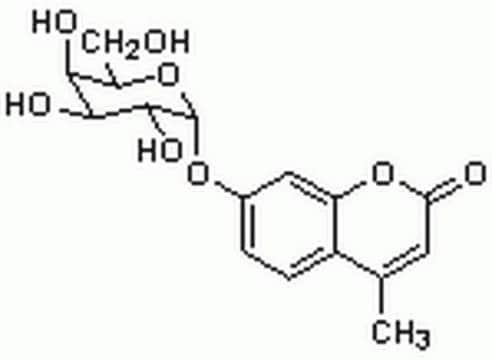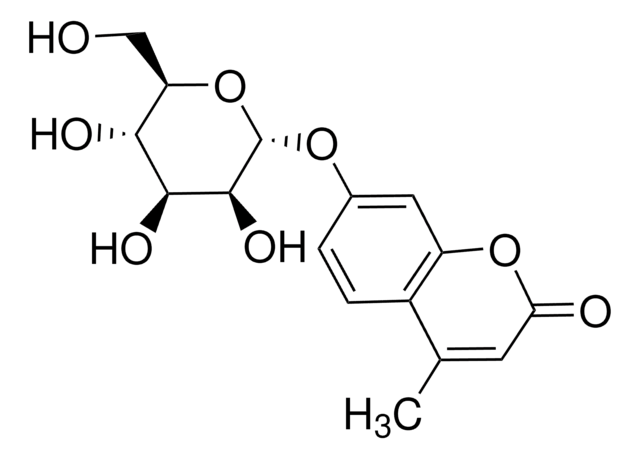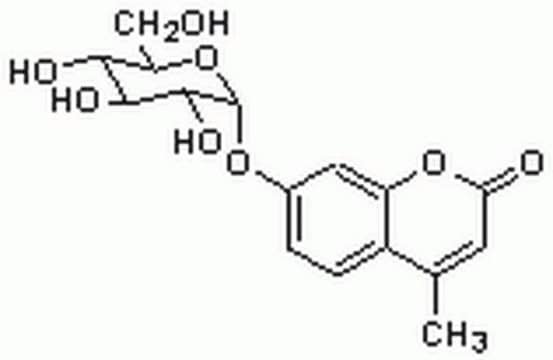Wichtige Dokumente
M7633
4-Methylumbelliferyl α-D-Galactopyranosid
≥98% (TLC)
Synonym(e):
MU-alpha-GAL
Größe auswählen
CHF 192.00
Größe auswählen
About This Item
CHF 192.00
Empfohlene Produkte
Assay
≥98% (TLC)
Form
powder
Löslichkeit
water: 50 mg/mL, clear, colorless to very faintly yellow
Fluoreszenz
λex 317 nm; λem 374 nm (pH 9.1)
λex 360 nm; λem 449 nm (Reaction product)
Lagertemp.
−20°C
SMILES String
CC1=CC(=O)Oc2cc(O[C@H]3O[C@H](CO)[C@H](O)[C@H](O)[C@H]3O)ccc12
InChI
1S/C16H18O8/c1-7-4-12(18)23-10-5-8(2-3-9(7)10)22-16-15(21)14(20)13(19)11(6-17)24-16/h2-5,11,13-17,19-21H,6H2,1H3/t11-,13+,14+,15-,16+/m1/s1
InChIKey
YUDPTGPSBJVHCN-CHUNWDLHSA-N
Suchen Sie nach ähnlichen Produkten? Aufrufen Leitfaden zum Produktvergleich
Anwendung
Biochem./physiol. Wirkung
Angaben zur Herstellung
Lagerklassenschlüssel
11 - Combustible Solids
WGK
WGK 3
Flammpunkt (°F)
Not applicable
Flammpunkt (°C)
Not applicable
Persönliche Schutzausrüstung
Eyeshields, Gloves, type N95 (US)
Hier finden Sie alle aktuellen Versionen:
Analysenzertifikate (COA)
Die passende Version wird nicht angezeigt?
Wenn Sie eine bestimmte Version benötigen, können Sie anhand der Lot- oder Chargennummer nach einem spezifischen Zertifikat suchen.
Besitzen Sie dieses Produkt bereits?
In der Dokumentenbibliothek finden Sie die Dokumentation zu den Produkten, die Sie kürzlich erworben haben.
Kunden haben sich ebenfalls angesehen
Active Filters
Unser Team von Wissenschaftlern verfügt über Erfahrung in allen Forschungsbereichen einschließlich Life Science, Materialwissenschaften, chemischer Synthese, Chromatographie, Analytik und vielen mehr..
Setzen Sie sich mit dem technischen Dienst in Verbindung.













